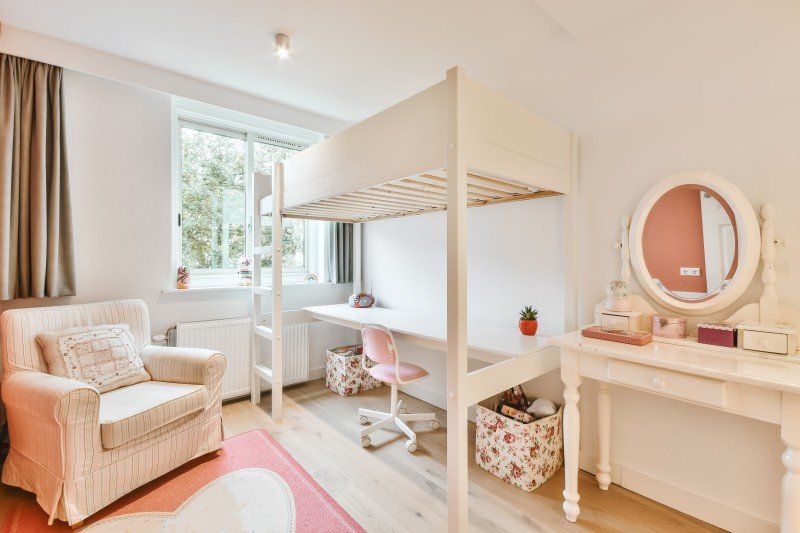Bunks: The Versatile Space-Saving Solution for Modern Living
In today's busy world, where urban home are shrinking and the need for versatility and usefulness is increasing, bunks have emerged as a popular service. Bunks are not simply a kind of bed; they represent a sophisticated technique to making the most of space, promoting social interaction, and providing comfortable sleeping arrangements. This article will check out the various kinds of bunks readily available, their advantages, and how they can transform both small and large home.
Comprehending Bunks: What Are They?
Bunks, commonly described as bunk beds, are two or more beds stacked on top of each other. They are designed to save floor space, making them ideal for kids's spaces, hostels, and even adult living scenarios. Bunk beds are offered in different designs and configurations, from conventional models to modern, designer analyses.
Types of Bunks
| Kind of Bunk | Description |
|---|---|
| Twin-over-Twin | 2 twin beds stacked on top of each other. Ideal for kids sharing a space. |
| Twin-over-Full | A twin bed on leading and a bigger complete bed on the bottom. Great for accommodating visitors. |
| Full-over-Full | Two full-sized beds stacked together. Perfect for older kids or adults. |
| L-Shaped Bunk Bed | Beds are arranged in an L shape, enabling a corner placement and included space below. |
| Loft Beds | Only the leading bunk exists, leaving space for a desk, couch, or storage underneath. |
| Triple Bunk Beds | 3 beds stacked vertically, excellent for making the most of vertical space. |
Advantages of Using Bunks
- Space Efficiency: Bunks are developed to utilize vertical space, making them perfect for small bedrooms or homes where flooring space is restricted.
- Cost-efficient: Investing in a bunk bed can be more affordable than acquiring numerous different beds, particularly for growing families or those with frequent visitors.
- Versatile Designs: Many bunks included add-ons, such as desks, storage drawers, or futons, enabling flexible use of the area.
- Social Interaction: Bunk beds invite friendship among siblings and good friends, cultivating a sense of connection.
- Imaginative Use of Space: Bunk beds encourage imagination in space style, enabling playful styles and vibrant decoration that can make a bedroom feel special and inviting.
Practical Considerations
- Height Limitations: When choosing a bunk bed, it is necessary to consider the height of the ceiling in the room. Measure the space to make sure there is adequate clearance above the top bunk for safety and convenience.
- Weight Restrictions: Each bunk has a particular weight limitation. Parents need to evaluate the weight of those utilizing it, especially in the case of adults or heavier teenagers sharing the bed.
- Safety Features: Features such as guardrails, sturdy ladders, and safety certifications are important for guaranteeing the bunk bed's security, especially for younger users.
Bunks for Various Living Situations
Family Homes
In family homes, bunks provide a practical solution for brother or sisters sharing a space or accommodating sleepovers. Bunk beds can be stylishly incorporated into a child's space while supplying ample space for play.
Hostels and Vacation Rentals
For hostels and vacation leasings, bunk beds optimize sleeping plans without jeopardizing comfort. Such setups use an affordable method to accommodate a larger number of visitors.
College Dormitories
In college dorms, bunks help maximize the restricted square footage readily available, permitting more room to interact socially and study.
Small Apartments
In little metropolitan homes, lofted bunk beds produce extra space for living locations, work spaces, or storage, making life more manageable in compact environments.
Upkeep and Care of Bunks
Keeping a bunk bed is vital for guaranteeing its longevity. Here are a few tips:
- Regular Inspections: Check for any loose screws or bolts and tighten them as required.
- Cleanliness: Dust and tidy the bunks regularly to prevent irritants and guarantee a tidy sleeping environment.
- Mattress Care: Use a quality mattress protector to maintain health and extend the life of the mattress.
- Age Appropriateness: Upgrade to a bigger, more strong bunk as kids grow or when the existing plan no longer fulfills the needs of its occupants.
Often Asked Questions (FAQs)
1. Are bunk beds safe for children?
Yes, bunk beds can be safe for children if they are built with safety features like guardrails and a stable ladder. Constantly supervise more youthful children when they are using bunk beds.
2. What age is suitable for a child to sleep on the top bunk?
Most manufacturers advise that kids under the age of six need to not sleep on the upper bunk due to safety concerns.
3. Just how much weight can bunk beds usually hold?
Weight capacities differ based on the style and materials but generally vary from 200 to 400 pounds. Always examine the manufacturer's guidelines.
4. Can bunk beds be separated into two single beds?
Numerous bunk beds are created to be convertible, permitting them to be separated into 2 individual beds. Bunk Beds Store to check the item requirements before purchasing.
5. What kind of bed mattress is best for a bunk bed?
A medium-firm mattress is often recommended as it supplies adequate support without being too heavy or soft, which can position safety concerns.
Bunks are more than just beds. They are innovative space-saving solutions that accommodate the requirements of modern-day living. With different styles readily available, they provide convenience and functionality for households, guests, and individuals alike. By focusing on safety and upkeep, owners can ensure that their bunk beds end up being a valued part of their living areas for several years to come. Whether for playful children or accommodating guests, bunk beds use a stylish and useful service to the challenge of restricted space.

